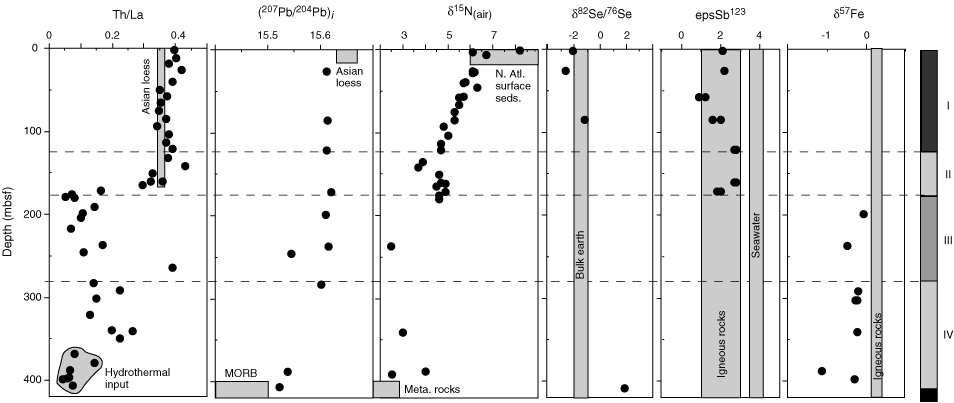
Figure F5. Trace element and isotopic variations in sediments from ODP Site 1149. From left: Th/La variations showing dominance of eolian dust source at the top of the site, and REE-rich biogenic and hydrothermal material in the lower part of the site (Plank et al., 2002a; Asian loess from Jahn et al., 2001). Initial Pb isotopic variation, showing nearly uniform, continental values through most of the site but approaching mid-ocean-ridge basalt (MORB) values in sediments at the base, due to hydrothermal inputs (data from Hauff et al., 2003, corrected for ingrowth based on measured U/Pb and ages interpolated between unit boundaries as in Figure F4. Diagenetic processes decrease nitrogen isotopes by several permil downcore, to values typical of low-grade metamorphic rocks (after Sadofsky and Bebout, 2004). Selenium isotope variations, lower than bulk earth values at the top of the core (possibly due to organic matter degradation) and greater than bulk earth in basalt sediments with hydrothermal inputs (after Rouxel et al., 2002). Antimony isotope variations, lying generally within the values for igneous rocks but shifted toward seawater in Unit II (after Rouxel et al., 2003b). Iron isotope variations, showing values lower than igneous rocks, in chert- and carbonate-dominated lithologies of Units II and III (after Rouxel et al., 2003a).


![]()